The Lower Amazon fisheries region extends from the mouth of the Madeira River to the mouth of the Xingu River and includes the lower courses of the Tapajós, Trombetas, Xingu, Jari and several smaller rivers. The Amazon River is very wide in this region and studded with many large floodplain lakes. Annual river level fluctuation is approximately 7 meters.
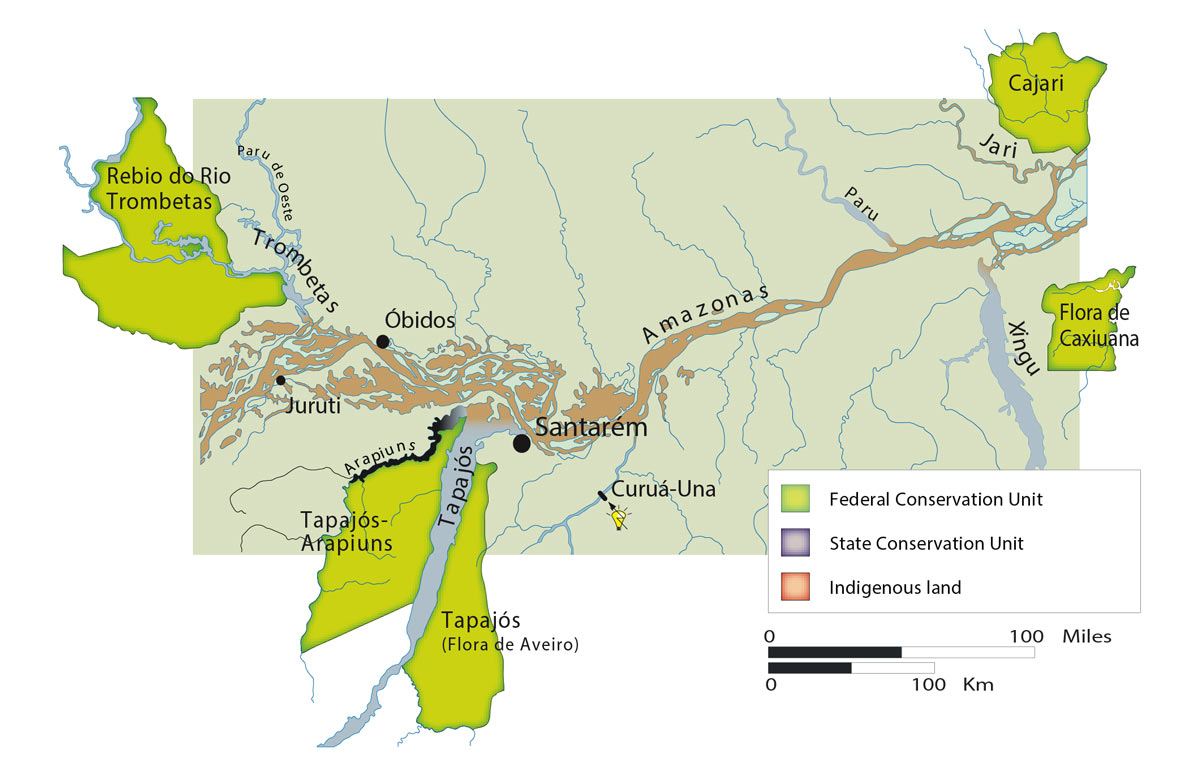
Fisheries data are available for seven cities of the Lower Amazon. Santarém and Óbidos are the most important fishing ports of the region and they have public and private ports receiving approximately 6,000 tons of fish, or 80% of the total potential yield of the region. Santarém, with more than 200,000 people, is the largest and most important city economically. Santarém receives hydroelectric power (Curuá-una and Tucuruí dams) and has refrigeration plants and ice factories. The total potential fish catch of Santarém represents more than half of that of the Lower Amazon. Santarém’s fishing fleet is composed of local boats and those from neighboring cities. Fish is sold in local markets and to refrigeration plants.
Óbidos is a small city with about 47,000 people. It is located in front of one of the oldest royal fisheries, the Lago Grande de Vila Franca or Curaí and is also near the narrowest stretch of the Amazon River. The geographical situation of Óbidos is highly favorable for fisheries, a factor that led to the construction of fish refrigeration plants in the city in the 1970s. Óbidos receives approximately one quarter of the total potential catch of the Lower Amazon.
Monte Alegre and Oriximiná, on the north bank of the Amazon River, are the second and third largest cities of the Lower Amazon, with 61,000 and 48,000 people, respectively. These cities are also located near large floodplain lakes, such as Lago Grande de Monte Alegre and Lago Sapucuá. Lago Grande de Monte Alegre is also exploited by fishing fleets from the estuary region. Mapará (Hypophthalmus) is the main species targeted by outside fishermen and conflicts have arisen between local fishermen and outsiders. IBAMA has divided the lake between locals and outsiders in an attempt to reduce conflicts. The total potential catch of Monte Alegre and Oriximiná represents about 10% and 5%, respectively, of that of the Lower Amazon. Alenquer, Almeirim and Prainha are small cities with 25,000 to 50,000 inhabitants and their total potential catch together is less than 10%.
Fish catches in the Lower Amazon are divided about equally between the river channels and floodplain lakes. Gillnets are the most important fishing gear. A large number of species are exploited but 90% of the total catch is accounted for by 17 species. Mapará and dourada represent one-third of the total catch of the Lower Amazon and both are important to refrigeration plants. Mapará is captured mostly in floodplain lakes whereas dourada is taken almost exclusively in Amazon River channels. The annual catch of mapará in Santarém between 1992 and 2003 has been relatively stable, ranging between 400 and 900 tons. Annual catches of dourada in the Lower Amazon for the same period ranged from 100 to more than 1,000 tons.
-
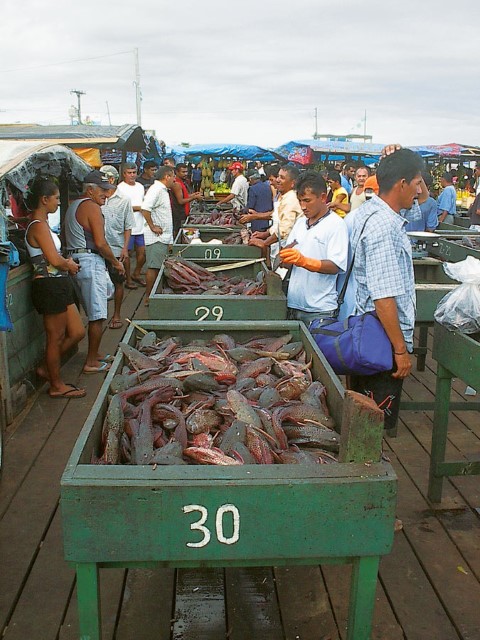
Bajo Amazonas 0
Acarí (Liposarcus pardalis), a detritivore and one of most important species during the low water season, in Santarém Department – Country: Pará – Brazil Main Basin – Sub Basin: Amazon Main Stem – Eastern Amazon Main Stem Photographer: Ronaldo Barthem
-
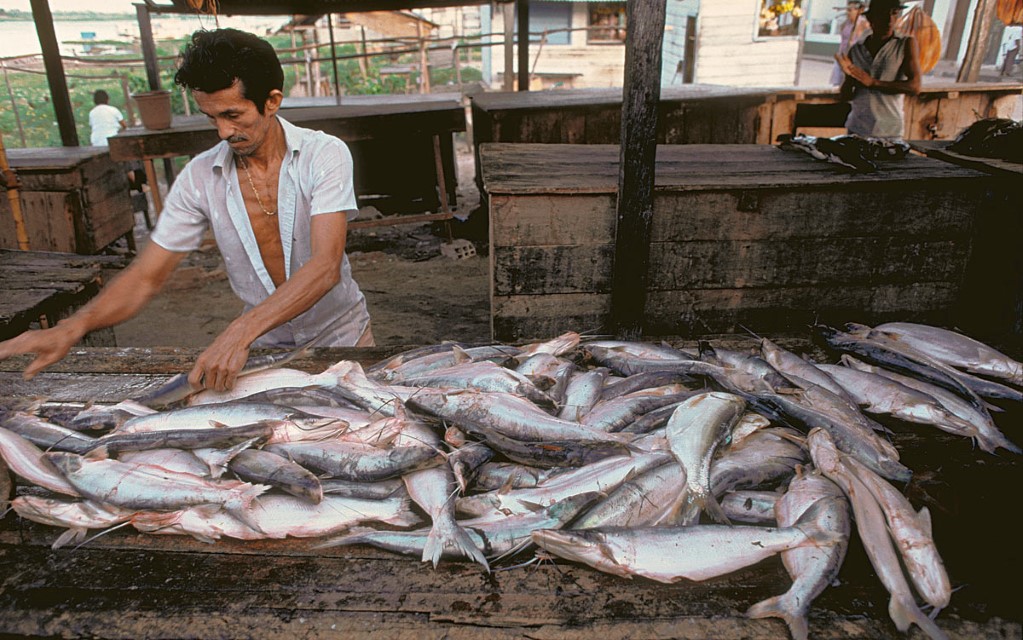
Bajo Amazonas 1
Mapará (Hypophthalmus sp.) in Santarém fish market. Department – Country: Pará – Brazil Main Basin – Sub Basin: Amazon Main Stem – Eastern Amazon Main Stem Photographer: Michael Goulding
-
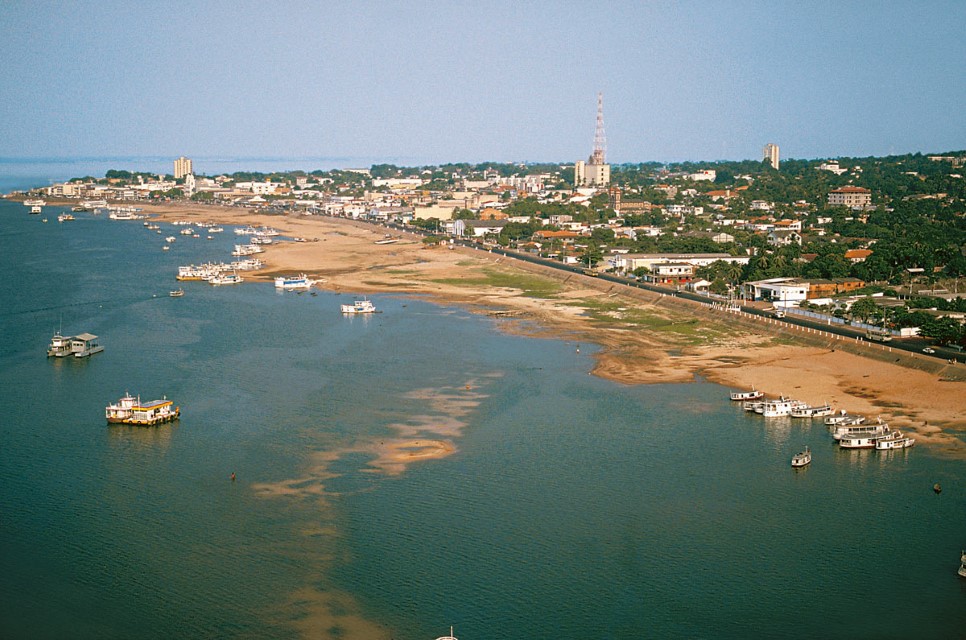
Bajo Amazonas 2
Clear waters of the Tapajós River along the Santarem waterfront during the low water period. Department – Country: Pará – Brazil Main Basin – Sub Basin: Amazon Main Stem – Eastern Amazon Main Stem Photographer: Michael Goulding
-
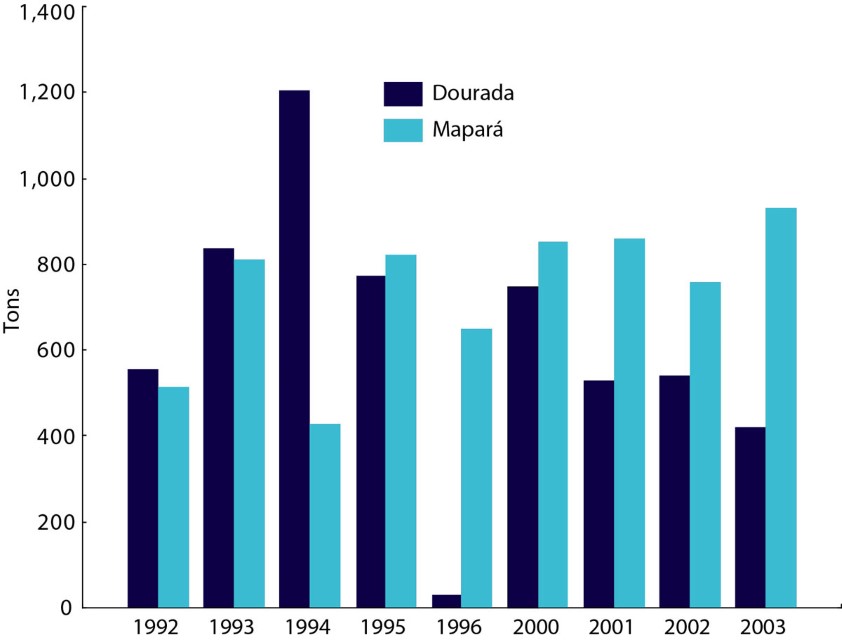
Bajo Amazonas 3
Lower Amazon annual catch of mapará and dourada in Santarém.
REGION
Central Amazon
Bz-Co-Pe Border
Estuary
Lower Amazon
Peruvian Amazon
Juruá
Purus
Madeira
Upper Madeira
Tocantins
